At least once in your life, you’ve been a part of the Android-Apple debate. Both sides believe so strongly in their product that you may not see the end of this discussion.
That debate is a testament to a great product differentiation strategy, perfected over time. Every brand longs for this level of loyalty from their customers.
A well-crafted product differentiation strategy can do that for you.
Every business owner has a vision of what is supposed to be unique in their product or service. This guide explores different product differentiation strategies and examples of executing them to put your product on the world map.
Table of contents
- What is a product differentiator?
- How to create great product differentiators?
- What are the top 4 product differentiation strategies?
- 3 risks to avoid when defining product differentiators
- How to make most of your product differentiation strategy?
- Conclusion
What is a product differentiator?
When new technology enters the market, commoditization happens quickly. It doesn't take long for a fiercely competitive environment to get created. If a business wants to sustain itself, the product has to stand out.
Product differentiators are your unique selling proposition. It comes from distinct qualities you exhibit in business that set you apart from all others.
The goal of a product differentiator is to create a convincing reason for why a customer has no real option but only your product.
How to create great product differentiators?
Here’s how product differentiators help a business enjoy a competitive advantage over its competitors.
1. Figure out the ‘why’
Phil Knight, the co-founder of Nike said,
We wanted Nike to be the world's best sports and fitness company. Once you say that, you have a focus. You don't end up making wing tips or sponsoring the next Rolling Stones world tour.
He was clear on 'Why' he started his company. That main goal worked as the north star for all explorations, new products, and marketing ideas. Their goal was to be the world's best sports and fitness company. Nike went on to be just that.
Takeaway: It is not about coming up with clever lines. It is the belief system that works behind the organization. The core belief dictates all the actions, products, and organizational behavior.
2. Identify and cater to the early adopters
For new and innovative products, you want the buy-in of the innovators and early adopters. They are a small user segment but are major influencers to all the large user segments that follow.
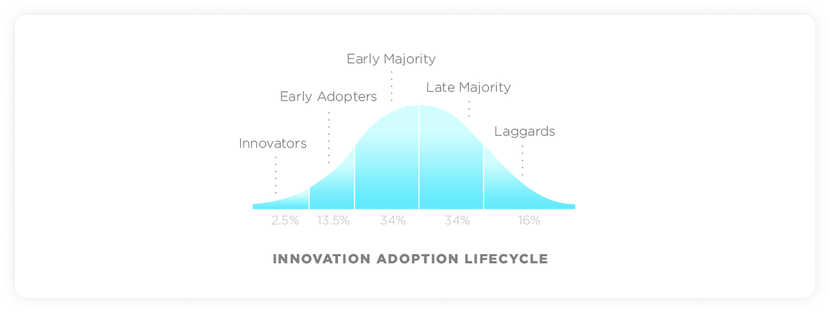
Source: Wikipedia
Fitbit launched in 2009 and created a market for wearable fitness devices. It was a fairly unique offering with no competition. As part of their marketing strategy, they identified influencers that their target audience (18-50, tech-savvy, need motivation to get fit) connected with.
They brought in influencers from across the globe to be part of the Fitbit campaign. It helped create engagement with their target market instantly. This strategy has been hugely successful in creating a stronger community for Fitbit despite stiff competition from Apple watches.
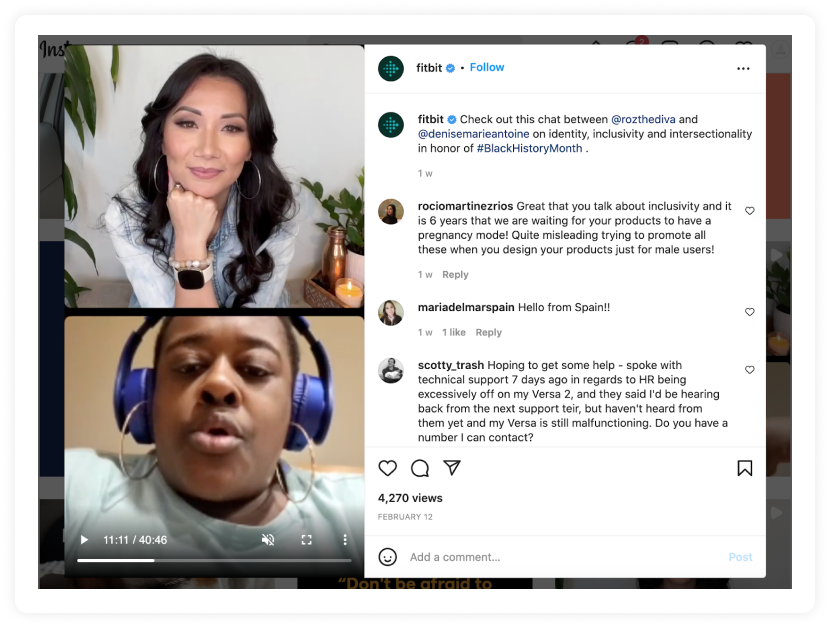
Source: Radarr
Takeaway: This sort of reach-out brings out product differentiators organically. Social listening and influencer marketing are systematic ways of reaching out to early adopters.
3. Keep innovating
Even if you come up with the swankiest products with the best features first, others will catch up fast. To keep ahead is investing in innovation through systematic research and development.
We cannot talk about innovation without mentioning Apple. Macintosh 84, iMac G3, iPod, iTunes, iPad, AirPods,
Apple watch are a few breakthrough milestones that changed how the modern world lives, listens to music, and communicates. It doesn't stop there. Apple does not only make sure that it is feature-packed and innovative. They make sure that the features work seamlessly across all devices. Once used to it, customers find it difficult to leave the Apple ecosystem.
'Everything works so well' is a great product differentiator that people are happy to pay Apple an easy premium.
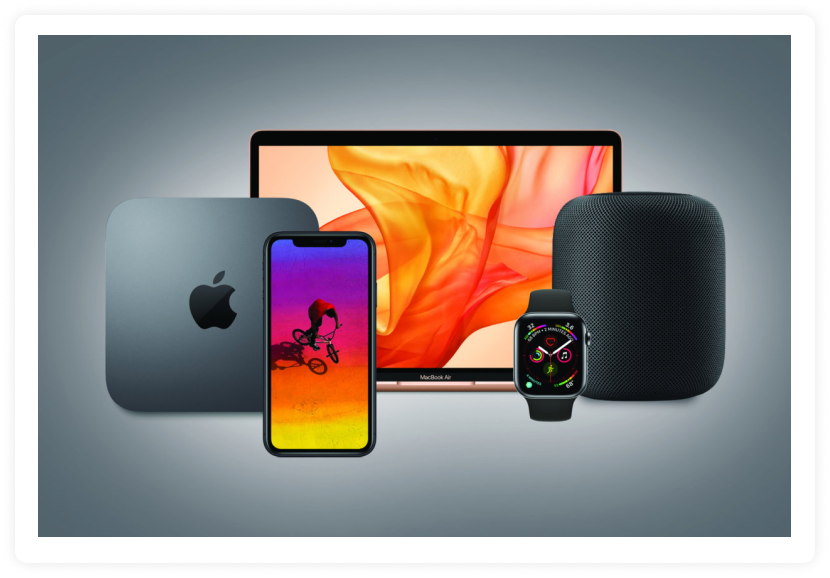
Source: Topteksystem
Takeaway: Innovation, premium quality are great differentiators. When done well, this helps in creating customer loyalty.
4. Create meaningful relationships with customers
The customers who feel respected and acknowledged keep coming back. Many organizations find great success in creating a focused strategy around customer relationships.
Southwest Airlines is a case study differentiating itself from its competitors by providing excellent customer service. It has been so popular that it booked profit for 47 straight years. A string that only ended in 2020 because of the COVID lockdown.
They mention customers are at the forefront of the company's mission and culture. They work to provide customers with an experience that fulfills their needs and makes it easy for them to accomplish their goals with the company.

Source: Business Insider
Takeaway: Customer service can go beyond complaints. Creating a relationship with your customers helps to create a long-term relationship. It becomes a clear differentiator when a customer is out in the market looking for a service/product.
5. Grow horizontally and vertically
Expand horizontally and/vertically for long-term business sustenance. Once you have a product that works, create more offerings.
Nike was named the world's most marketable brand in sport for 2021. There is no professional sport that Nike does not create excellent products for. The sportswear brand teamed up with Apple to create Nike+ that worked with iPod nano to track a runner's performance. It is truly remarkable.
Takeaway: Creating a range of specialized products catering to different segments increases your products' total target market. It helps to extend your product differentiators to a larger market, inviting more loyal customers and longer customer relationships.
What are the top 4 product differentiation strategies?
Product differentiation strategy is a marketing strategy to help customers choose your product. There are five main ways to make that happen.
1. Unique features
Sometimes, innovative ideas trigger a unique new product. Such products do not have immediate competitors and enjoy the first-mover advantage. When Amazon Kindle launched, it was a new product using new technology for a specific function. Their unique product, combined with a precise monetization strategy, ensured that there are hardly any competitors to Amazon Kindle even today.
It is not always possible to invent new products. Investing in your product to pack productive features is the next best thing to do. For example, Dyson is the best in class in each product range it enters. Dyson invests 6X more in R&D as compared to any of its competitors, patents aggressively, and as a result, can charge a premium because of it.
2. Pricing strategy
There are many ways in which tweaking with price can work in favor of your products. Here are some examples of pricing strategies in play.
- Premium pricing
Premium pricing is a marketing tactic to make a product look special and high-end. A high price for unique products implies a considerable investment in the research and development of the unique product.

Source: Invoice barry
- Luxury pricing
Sometimes, the company makes a conscious decision to cater to only a specific and luxurious market segment. They tag the products at a very high price to create a brand image that caters only to people who can afford high-end lifestyles.
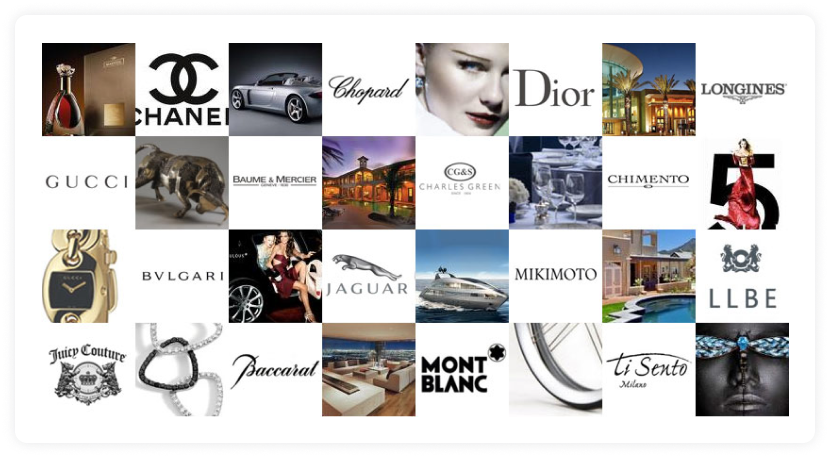
Source: Google
- Charm pricing
One of the popular methods to attract customers is to make the product 'appear' cheaper. Products or services offered at prices that look like $1.99 or $599 use this sort of psychological pricing.
- Niche pricing
A great example of niche pricing is the 'Dollar store' or '99 Cents', where any item costs a certain amount. Since this is the pricing and selling strategy, the operations align accordingly. In this case, the price dictates the product, unlike other pricing strategies.
3. Inclusive experience, excellent service
Enterprises like restaurants, spas, resorts implement a differentiation strategy promising a unique experience. Fitness Brand CrossFit has made working out a different experience from what the regular gyms offer. It is a workout hybrid unlike anything else. The product is hypersocial, has different workouts, and measures your fitness regularly. It is holistic in approach, and the primary goal of CrossFit is to make you better at life. This sort of unique approach and performance has people addicted to it. This brand of fitness has managed to create a cult following.
4. Social cause
Everybody wants to contribute to making the world a bit better. With the rising awareness about social issues, most people are aware that buying new things causes environmental damage to at least some degree. People want to be associated with brands that leave a smaller carbon footprint, are cruelty-free, responsible, recycled or recyclable, or help with humanitarian efforts.
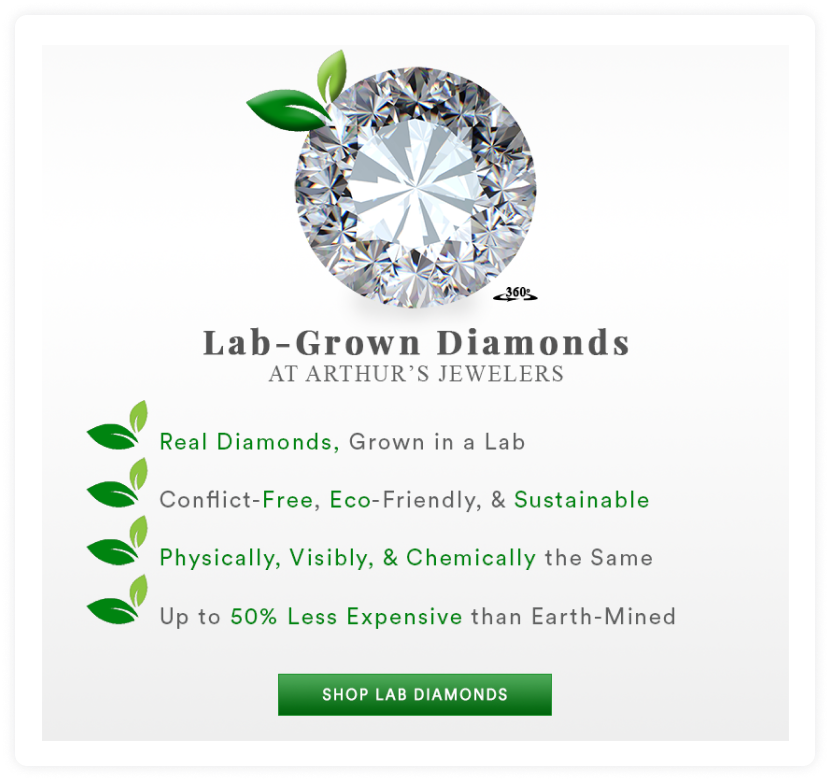
Source: Arthur’s Jewelers
For example, Arthur’s Jewelers markets lab-grown diamond/precious gems companies. Their advertisements center around the fact that their products are sourced ethically. Here, there may not be any mention of cost or carats. Yet, it is a powerful product differentiation strategy because it makes people feel better about their choices.
3 risks to avoid when defining product differentiators
While defining your product differentiators, ensure that you avoid these 3 risks:
1. Becoming complacent - keep the ideas churning
You'll Tell Them the Next Thing Will Be Better Because It Always Is.
Mad Men
It is easier to believe that you are here to stay forever when times are good. Things change faster when you are not looking. So, always be in on the trends and with the change.
2. Easy to copy features and ideas
Anything that works will be copied. With open-source tech and the way things are moving, it is easier to develop the same features as a competitor faster, in a shorter amount of time. So features alone cannot be your differentiation strategy.
3. Price as the only differentiator
It is easier to come up with competing prices than features. Once the market share is gone, and loyalties are shifted, they don't switch back as fast. And if money is the only value you have to offer, customers may not come back.
The idea is to get all the proportions of differentiators just right. The right amount of innovation for the right price is offered to the innovators and early adopters of the right target audience. It's a delicate concoction that becomes a product differentiation strategy in itself.
How to make most of your product differentiation strategy?
Here’s how you can make the most of your product differentiation strategy.
1. Increase market share
Use your product differentiation strategy to increase your market share.
Reliance Jio is an unprecedented example in this case. It captured the market from day 1 of its launch, reaching more than 50 million subscribers within 83 days of launch. When it entered the market in 2016, India had 10+ mobile carriers. In 2020, it reduced to 4, with Jio dominating with 35% of the market share.
While all businesses may not be able to follow this story, it is certainly worth trying to emulate.
2. Create a fan following
Brands like Ikea, Starbucks, Apple, and Lego enjoy a fan following. Are their products the best, cheapest, packed with more features than any other? Not necessarily. But, over the years, these brands have been consistent in their quality and beliefs.
There are many other creative ways like crowdsourcing, creative events, partnerships to get the customers to associate personally with the brand.
3. Data-driven email marketing campaigns
Once your product differentiation strategy is in place, segment your customers based on their interests, age, and demographic information. Then, reach out to them through tailored campaigns.
There are multiple channels of running ads. Email marketing is one of the more powerful ways of reaching out to your target audience. You can read more about creating personalized emails in our guide to creating personalized emails.
You can use an email marketing campaign provider that also helps you track the performance of your campaign. Conversion rate, average order value, return on investment are some metrics that help reflect the success of your campaign.
Conclusion
The takeaways from this guide on product differentiation strategies should help you define and revisit your strategy for better results. If you need help creating a brand voice, check out this guide that will help you do that in 5 easy steps.
What you should do next
Hey there, thanks for reading till the end. Here are 3 ways we can help you grow your business:
Talk to an email expert. Need someone to take your email marketing to the next level? Mailmodo’s experts are here for you. Schedule a 30-minute email consultation. Don’t worry, it’s on the house. Book a meet here.
Send emails that bring higher conversions. Mailmodo is an ESP that helps you to create and send app-like interactive emails with forms, carts, calendars, games, and other widgets for higher conversions. Sign up now and send 10k free emails/month. Sign up here.
Get smarter with our email resources. Explore all our knowledge base here and learn about email marketing, marketing strategies, best practices, growth hacks, case studies, templates, and more. Access guides here.

